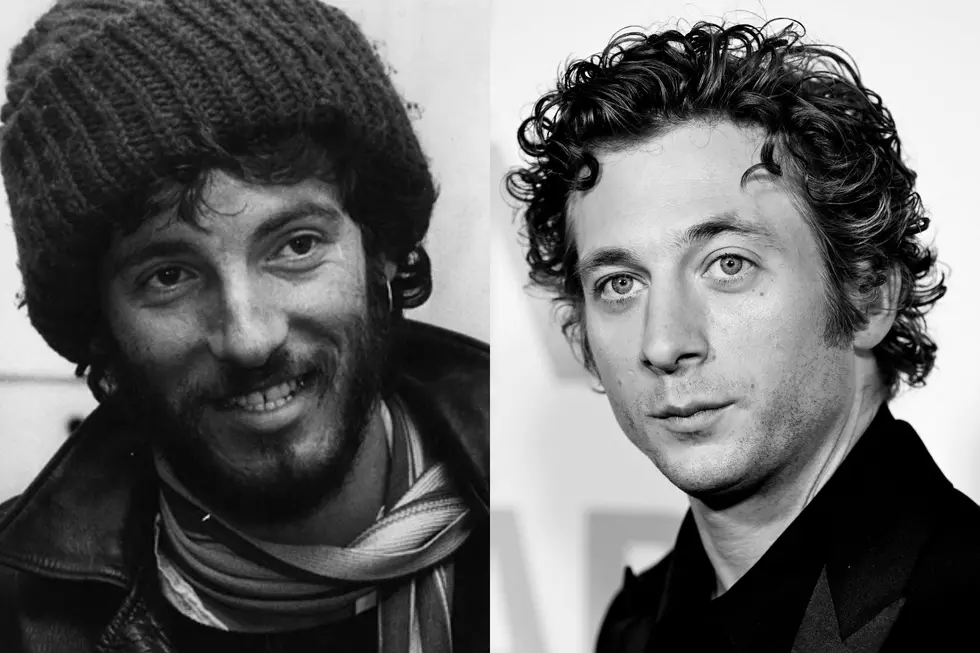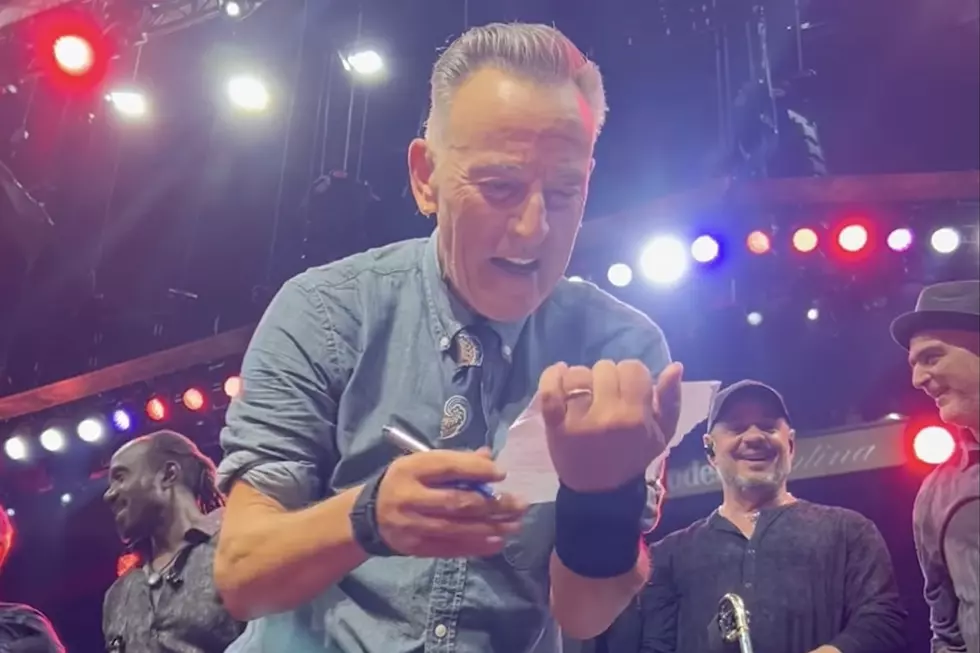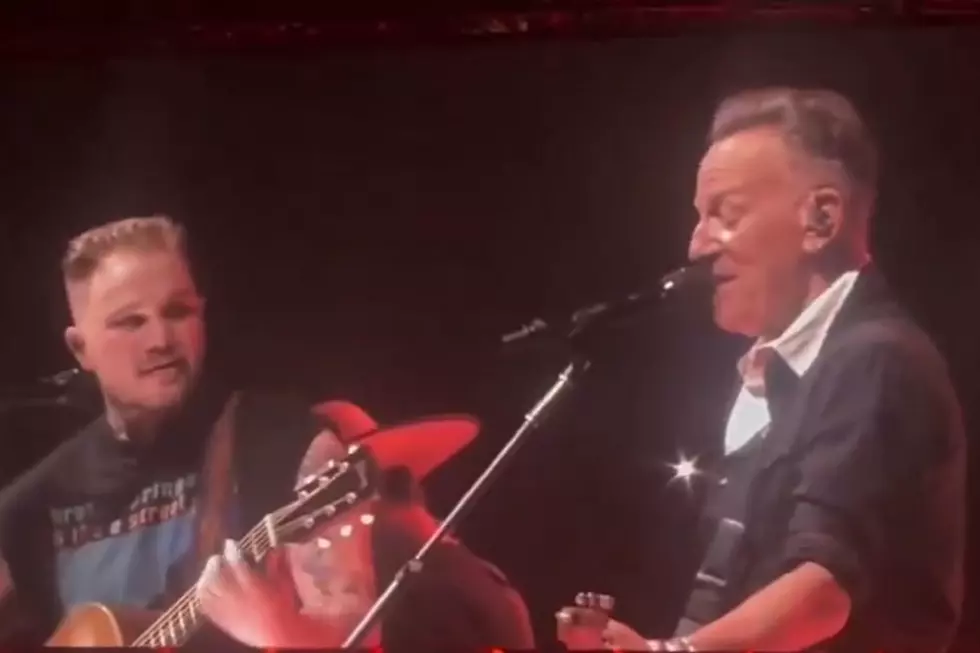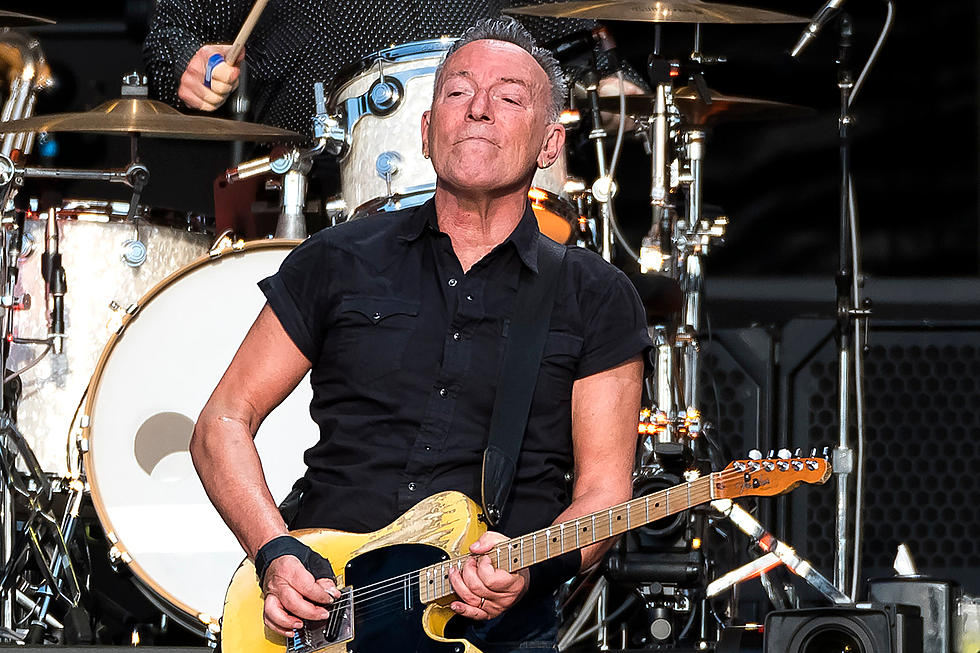
When Bruce Springsteen Launched His First Solo Tour
Bruce Springsteen embarked on his first-ever solo tour in support of The Ghost of Tom Joad, having spent more than 20 years fronting bands. The initial concert took place on Nov. 22, the day after the album's release, on familiar ground – the Count Basie Theater in Red Bank, N.J.
Five years earlier, he had performed a solo concert for the first time since 1972 when he played two benefits for the Christic Institute, but Springsteen had never undertaken a full-scale tour without a band. (He didn't tour behind 1982's Nebraska.) And even though Springsteen had been playing at least arena-sized venues regularly for nearly two decades, he went for the intimacy of theaters that held between two and five thousand people.
The Ghost of Tom Joad, a threadbare collection of acoustic songs that mainly deal with migrant workers and other marginalized people in the Southwest, had been released the day before. Fittingly, he opened, as he did for nearly every date on the tour, with the title track. On a handful of other nights, his first song of the evening was “The Ballad of Tom Joad,” Woody Guthrie’s retelling of John Steinbeck’s 1939 novel, The Grapes of Wrath.
After the first song, he would usually address the crowd by asking for as much silence as possible while he was playing. What could have come across as a condescending move was quickly undercut by Springsteen’s self-aware humor, saying something like, “Don’t make me come down there and smack you around. It’ll ruin my nice-guy image.”
Watch Bruce Springsteen Perform 'Pilgrim in the Temple of Love'
From there, it was a large percentage — and, on some nights, all — of the new album with some cuts from his catalog that worked off of similar themes. So chestnuts like “Darkness on the Edge of Town” and “Born in the U.S.A.” were re-cast for acoustic guitar and stood by side-by-side with “Straight Time,” “Sinaloa Cowboys” and “The Line.” Kevin Buell, Springsteen’s guitar tech, played keyboards offstage for some songs.
The result was the most serious tour Springsteen had launched to date. The setlist left little room for that mixture of light and dark that typified a Springsteen concert. The only levity came in the form of his stage banter and one or two songs. Early in the tour, he would break out “Does This Bus Stop at 82nd Street” from Greetings From Asbury Park, N.J. toward the end of the set. But in early 1996, perhaps sensing the tour needed some humor, he added an unreleased satire of late-night infomercials, “Sell It and They Will Come,” to the first half of the set.
By the time he reached England in April 1996, he replaced that with “Pilgrim in the Temple of Love” (a story about running into Santa Claus in a strip club) and “Red Headed Woman” (which described the joys of having one’s “tires rotated” by a ginger – and, more graphically, vice versa) to the first half of the set. Later on, another silly tune, “There Will Never Be Any Other for Me But You,” replaced “Pilgrim” but served a similar purpose.
Brucebase lists 77 songs performed during the tour, which ran — with only about six months off — until late-May 1997 and included stops in Japan and Australia. Two years later, Springsteen’s next tour would see him reunited the E Street Band. He wouldn’t tour solo again until 2005, in support of Devils & Dust, which contained several songs that were originally written for The Ghost of Tom Joad.
See Bruce Springsteen and Other Rockers in the Top 100 Albums of the '70s
More From Ultimate Classic Rock









